#i am dragon
Explore tagged Tumblr posts
Text




Yaroslavas Kokoshnik in I am Dragon
#i am dragon#yaroslava#kokoshnik#perioddramaedit#period drama#costume design#periodedit#russian#aesthetic#another beautiful design for this beautiful movie
191 notes
·
View notes
Text










Он – дракон (2015)
#Он – дракон#On – drakón#he is a dragon#i am dragon#tvfilmsource#filmtv#cinemapix#cinematv#filmtvdaily#dailyflicks#userstream#tvandfilm#usersource#fyeahmovies#tvfilmgifs#tvfilmedit#tvedit#movieedit#my stuff#my edits
83 notes
·
View notes
Text
Choosing the Beast: Modern Folklore Heroines Embrace the Animal Husband

“I choose the bear.” The refrain rang out across the web, with many a woman nodding in agreement or at least understanding, and certain men huffing with indignant outrage. Just a meme, really, but did it speak to a deeper truth? Is it merely age-old mistrust of patriarchy talking, or a true desire for the beastly, the wild, the untame?
I’m no sociologist, of course, but I have noticed an emerging trend in fem-gaze media that seems to reflect this view. In movies like I Am Dragon (2015) and recent shows like My Lady Jane and The Acolyte, the heroine chooses the beast, loving her animal husband in his wild form rather than requiring him to transform back into a mundane man to earn her affection. This is such a departure from the typical folktale pattern that it’s difficult to even find an historic example where this occurs.
Commonly thought to reveal the desire to tame a dangerous mate in a patriarchal society, most animal husband tales (ATU 425a) feature a hero who ultimately transforms permanently into a human. This is viewed not only as freeing him from the maddening effect of his wild form, but also saving his bride from committing the sin of bestiality. In these tales, the animal mate’s transformation is necessary for the salvation of both.
Is the modern heroine then damned by choosing her husband’s beastly form? Or does she actually free them both from the yoke of patriarchal expectations?
Bathing: Discovering the Wild Masculine
The first motif that stands out in these modern screen examples is bathing. In animal spouse tales, there is often a dynamic of the hunter and the hunted, and thus a moment when the hunter comes upon their would-be lover unawares. Perhaps they find the animal spouse sleeping, or they cast a light on them unexpectedly, see them without their animal skin or disguise, and so on. And of course, they often come upon the lover at their bath.
There is an implied eroticism in this discovery, finding one’s quarry not only undressed, but also in the most private of activities. Water of course symbolizes fertility, but bathing is also purifying, symbolically washing away all that might make a mate undesirable. And this, perhaps, is the reason that historically this motif is used almost exclusively for animal brides, not animal husbands.
For the animal husband, he either actively chooses to reveal himself to the bride (perhaps on their wedding night), or she violently strips away his disguise, often armed with “flame and steel” like Psyche and her many avatars. Animal brides on the other hand are nearly always discovered at a body of water, bathing. The hunter will then capture her either by stealing her animal skin or cloak, or by placing his own clothing on her. What does it mean, then, when it is the husband who is discovered bathing in a body of water, held as an erotic object in the feminine gaze?

In The Acolyte, Osha follows Qimir to a pool where he slowly undresses, in full knowledge that she is watching. On the shore, she steals his lightsaber, just like the hunter who steals the animal skin, symbolically claiming him. When he emerges, Qimir dons new clothes, as if acknowledging that he is a different person than before he entered the water, almost purified in a way. Osha is forced to confront that there is more to the murderer in the mask than she realized.
Similarly, in My Lady Jane, our heroine goes looking for Guildford just before sunrise on their ill-fated wedding night, only to discover him bathing in the stables. The scene is gratuitously filmed from Jane’s (very horny) perspective, flipping the script on the countless scenes in screen history shot with the masculine gaze. Immediately after she discovers and confronts him, Guildford transforms against his will into a horse, and Jane realizes that he is an Ethian, a creature she has been taught is demonic and unnatural.

And in I Am Dragon, Mira makes several discoveries in quick succession: first, she deduces that Arman is actually the dragon. In the next moment, she slips from the island’s peak and falls, saved only when Arman transforms at the last moment and breaks her fall with his dragon form. The water begins to wash over his unconscious body, and at first Mira thinks that she will allow him to drown. But the sight of Arman in his human form after he rescued her, worried over by his animal familiar, stirs her to pity and she wraps him in a sail and drags him to safety. In this way, she clothes him, claiming him as her own.
Each of these heroines discovered a new aspect of her husband at the bath, finding him unexpectedly alluring, and ultimately choosing to begrudgingly claim him. Each animal husband tried to wash away his beastly form, to separate himself from the wild masculine. These men feel a sense of disassociation from a part of themselves, but now that their brides have discovered it, there will be no more hiding. Further, the bride now holds the power in the relationship, evidenced by how her husband needs her: Qimir needs Osha to be his apprentice, Guildford needs Jane to help him “break the curse,” and Arman needs Mira to heal him from his wounds.
Playing House: The Half-Husband
The second feature of these stories is a period of domesticity for the couple. For a brief time after the husband’s beastly nature is revealed, the lovers “play house” like children. While sexual tension is present, they typically do not consummate their union during this time, but instead cook, eat, rest, and care for one another. What’s more, they ignore or even attempt to actively destroy the husband’s animal form. They deny that this is part of him and therefore part of their relationship.
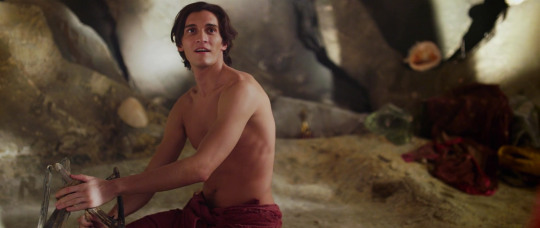
In I Am Dragon, Mira heals Arman, and wakes the next morning to find he has left food for her (dragonfruit, appropriately). Together they begin building a home out of shipwreck debris they find scattered around the island. A cheery montage shows them decorating a living space, choosing clothes, playing music, and dancing. But the specter of Arman’s monstrous form lurks on the edge of their idyllic life. Mira has nightmares, and tells Arman how much she fears “the dragon,” notably not referring to them as the same person. And eventually, it emerges that Mira has been planning to escape, rejecting Arman’s dragon form entirely.
After he sheds the helmet and robes of The Stranger, Qimir turns his attention to caring for Osha: he heals her, lets her sleep in his bed, provides clothes, and cooks for her. In turn, after some lightsaber-wielding, Osha becomes more comfortable in his home and accepts the food he offers, eventually even trying on his helmet. Later, they bicker amiably on their way to Brendok, like an old married couple on a road trip. When not facing down Jedi, Qimir leaves his menacing persona behind and transforms into an empathetic, protective, and alluring partner.

Jane Grey, meanwhile, finds herself using her honeymoon sequestered away in a private cottage to try to cure Guildford of his Ethianism. With her knowledge of medicine, she concocts various potions and magical cures, but none of them succeed. Guildford often checks in on her after these disappointments, making sure she’s getting enough sleep and taking care of herself. It’s also clear that they’ve been regularly dining together when Jane suddenly dashes off to rescue her friend. Guildford follows her and the two protect one another, followed by an almost-tryst. Even when they move into the palace, their day-to-day (or rather night-to-night) life is one of comfortable domesticity, although they continue to deny Guildford’s horse form.
In each of these cases (although less so in The Acolyte without Season 2 to continue the story), playing house can only last for so long while the husband’s animal nature is denied. There is a part of him that is suppressed, rejected, and this leads to him being incomplete, a half-husband. Each hero is unable or unwilling to accept and celebrate his whole self with his bride. Eventually, it is that denial that leads to a rift between the couple, which can only be healed not with the transformation of the husband, but with the embrace of his animal form.
Enforcing Patriarchy: The Rival
Each of these relationships exists in direct opposition to the dominant culture in the story: Arman as the Dragon is the literal enemy of Mira’s people, Qimir as Sith is the enemy of Osha’s Jedi masters, and in My Lady Jane, intermarriage between humans and Ethians is punishable by death. By choosing to stay with their animal husbands, even for a brief time, our heroines are openly defying the patriarchal norms of their societies. But no oppressive society is about to take that transgression lying down. In each story, a rival emerges to enforce the patriarchal order, kill the beastly husband, and retrieve the bride.

In I Am Dragon, Mira’s betrothed and descendent of the dragon-slayer, Igor, journeys to rescue her from the dragon. Over the course of the story, it becomes clear that Igor cares nothing for Mira herself, and merely feels entitled to her as his bride. Dragon-slaying is his heritage, so he must find her, kill the dragon, and take his place as the hero of his people. Even the marriage ceremony illustrates his ownership of her: he takes hold of a rope tied to her boat and reels her in, thus binding her to the patriarchal order. Contrast that to Arman, who offers her the power of flight, a symbol for freedom.
In Osha’s case, Qimir’s rival for her loyalty is clearly Master Sol, who wants to keep his former pupil dependent on him and the Jedi. Sol takes patronizing fatherliness to an extreme, constantly rescuing Osha rather than letting her stand for herself, teaching her to deny her feelings and instincts, and lying to her to “protect” her. The Jedi refuse to allow that there might be any other way to access the Force than their own, thus invading the home of the Brendok witches and ultimately orphaning the twins. Sol continues to press this dominance to the end, challenging Qimir and insisting to Osha that his own lies were justified.

In My Lady Jane, there are two rivals, both women. Lady Frances attempts throughout the show to dominate her daughters and crush their wills, forcing them into unwanted marriages, applying political pressure, and even counseling Jane to abandon Guildford to save herself. The other rival is Mary Tudor, who is determined not only to emulate her father’s violent, oppressive, and misogynistic reign, but to crush anyone she considers “unnatural” or who poses a threat to her rule. These characters stand as clear examples of how women can enforce patriarchy, too.
In each story, there is a moment when the rival briefly recaptures or “rescues” the bride from her beastly husband, bringing her to a moment of decision: will she stay within the bounds of patriarchy like a good little girl? Or will she make an act of defiance to choose her own path?
Marriage: Choosing the Beast
The bride’s choice will ultimately decide not only her fate, but that of her mate as well. As an independent character, the wild masculine is deeply wounded, separated from himself and thus from his bride. He longs to transform not into a greater, more whole person, but into a lesser, half-person. Alone, without the embrace of his anima, he cannot see the value of his beastly form. Instead of healing, he faces annihilation.
As a part of the bride’s psyche, the beastly husband represents her innermost desires, the truth of her heart, and a spirit freed from the expectations of her society. He is her animus, her missing wild masculine. If she transforms him into a man, then she will tame his wild nature, bringing him to heel under the boot of the patriarchy. Choosing the human form and rejecting the beast means rejecting her own psychological needs. It would be just another form of psychic dismemberment.

Fortunately and unusually, each of these modern brides chooses her beastly husband without demanding he transform. When Osha finally agrees to become Qimir’s apprentice, she takes his hand under the willow tree, clasping the newly-bled lightsaber between them. A few scenes later, this wedding imagery is repeated when they hold hands over the saber again, this time looking into a sunrise/set. Notably, at the moment they “marry” under the willow tree, Qimir is wearing his beastly helmet with rows of menacing, wolfish teeth. He has not come to the light side or shed his Dark Side persona, but Osha has embraced him anyway without fear. And while they might not both be healed (yet), they are more whole together than they were apart.
When her efforts to cure Guildford of his Ethianism repeatedly fail, Jane begins to suspect that his “condition” cannot be cured at all. But listening to her Ethian friends Susanna and Archer finally convinces her that the truth is Guildford doesn’t NEED to be healed - being an Ethian is who he is, and it’s nothing to fear. Unfortunately, Guildford still associates his beastly form with his mother’s death, so he is unable to accept it as Jane encourages, and flees. After a near-death experience, he uses his equine speed to return to the castle just as Jane is deposed and captured. As our heroes battle toward the end, Guildford comes to learn that there are many other proud Ethians, and that his family loves and accepts him in any form.
Still, he’s unable to transform at will, and when Mary captures him and sentences both husband and wife to death, it seems their story may end in tragedy. But as Guildford has been struggling to accept himself, Jane too has been battling with her own conscience. Does she renounce Guildford to save herself? Use her wits to kill the guard and escape? Bend to her mother’s manipulation? Jane confronts each temptation, and ultimately chooses to face death rather than betray Guildford or herself. But when her Ethian friends (the wild instinct) appear to disrupt the execution, our heroine seizes the opportunity to rescue Guildford. Unable to free him from the burning pyre, she confesses her love for him, and they kiss amid the flames.

Fire is often a herald of transformation, burning away illusions to reveal the truth. And when Jane and Guildford exchange their vows in this symbolic marriage ceremony, Guildford’s fears and illusions are finally burned away. Now that his bride has accepted his beastly form, he can accept it too, and so he at last transforms at will into a horse so that they can escape. Their story ends with them married and whole before the sunrise.
Among our modern heroines, Mira is the boldest in her embrace of the beastly husband. Offered yet again as a bride to Igor, she realizes that this is not what she wants, and casts off the tether from her boat. She declares “I love the Dragon!” using the name of her husband’s animal form rather than his human name. Then, she sings the song that will call the dragon to her, and he appears to carry her away again.
But their story is not over yet! Earlier in the story, Arman told Mira of how he loses control when in dragon form, and that dragons are compelled to reproduce by burning maidens to death and retrieving their offspring from the ashes. Returning to the island with her a second time, the dragon drops her on the altar and prepares to spew fire, but Mira lunges up and kisses him. This act of love, even when he is a monster, stuns the beastly husband. Again, Mira declares her love and kneels before him, saying she does not wish to be parted. We might expect the animal husband to transform in this moment, but instead he lays his fearsome head in her lap as a lover. Their story ends with a child and a flight in the sky, silhouetted by the sun just like the other couples.

Each bride, when confronted with the option to return to the patriarchal limits of her childhood, chose instead an act of love and acceptance for her wild masculine. This embrace helped the beastly husband to accept his whole self, and he is healed without having to cut off the wild parts of himself.
What Does It Mean?
Again, this story is so rare in world folklore that it’s difficult to even find examples. On fleeting occasions that the woman chooses an untransformed beast, it is presented as a cautionary tale. These women are framed as a danger to the community for their bestial impulses and abandonment of the social order, much like witches who were said to consort with the devil. It was certainly never presented as a happy ending, insofar as we can tell from written accounts.
So what does the emergence of this tale mean for our culture? I would argue that this is just the latest step in our ongoing reckoning with historic gender roles, as well as renegotiating with other forms of systemic oppression. People of all genders are pressured to reject a part of ourselves, cutting us off from our own truth and desires that run counter to the enforced social order. We must not challenge patriarchy, must not embrace different gender expressions, must not blur established hierarchies of power, must not find joy and power in our identities, and so on.
This enforced denial does tremendous damage to everyone caught in the system, and so through story, we dream our way to escape. We dream of embracing the dark, wild parts of ourselves, of flying free on a spaceship or a dragon or enchanted horseback, and of being totally loved for who we are.
It’s clear patriarchy is still fighting back against this emancipation of the wild feminine and wild masculine, given that both The Acolyte and My Lady Jane were canceled not long after their release. In the case of The Acolyte in particular, there was a sustained campaign from its announcement to harass and silence the creators. Demoralizing as this phenomenon may be, it’s important to remember WHO ultimately owns these stories:
“Fanfiction is a way of the culture repairing the damage done in a system where contemporary myths are owned by corporations instead of owned by the folk.
-Henry Jenkins, NYT 1997
Ah, an oldie-but-goodie. But Dr. Jenkins is right. Corporations may greenlight, film, release, and then cancel these stories, but ultimately they belong to the people. We take from these tales what speaks to us, leave what does not, and then retell them ourselves in fanfiction, in art inspired by the stories, and in lessons we pass on to our friends and families. If the embrace of the wild masculine speaks to you, let the story take root in your own life. Do you know someone who needs to be embraced, just as they are? Do you need to accept the parts of yourself that society tells you to hate? Do you want to be free, healed, and whole?
If so, then let these stories show you how, and tell more like them. Embrace the beast, and find your joy.
Sources:
Beauty and the Beast Tales From Around the World by Heidi Anne Heiner
In Search of the Swan Maiden: A Narrative on Folklore and Gender by Barbara Fass Leavy
And a relevant song for you, as a treat:
Women Who Run With the Wolves: Myths and Stories of the Wild Woman Archetype by Clarissa Pinkola Estés, Ph.D.
youtube
#monster husband#animal husband#atu 425a#the acolyte#oshamir#the acolyte meta#star wars#star wars meta#oshamir meta#osha x qimir#osha aniseya#qimir#master sol#my lady jane#lady jane grey#jane grey#guildford dudley#jane x guildford#janeford#on drakon#i am dragon#he's a dragon#i am dragon 2015#mira x arman#beauty and the beast#folk tales#fairy tales#anti patriarchy#save the acolyte#save my lady jane
693 notes
·
View notes
Text
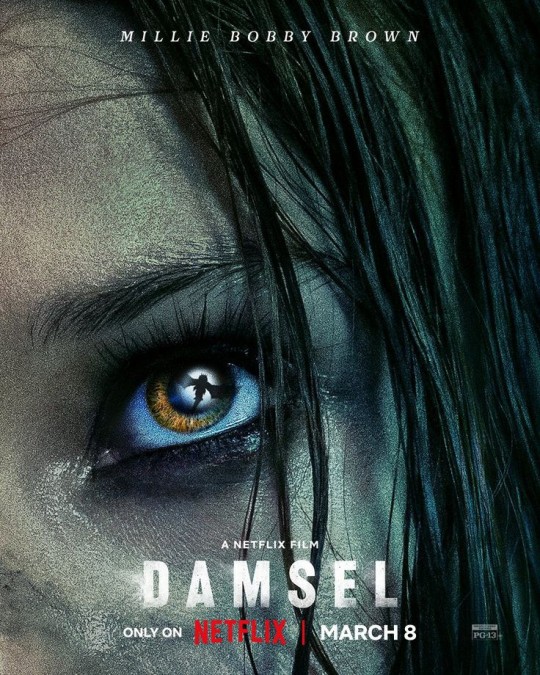
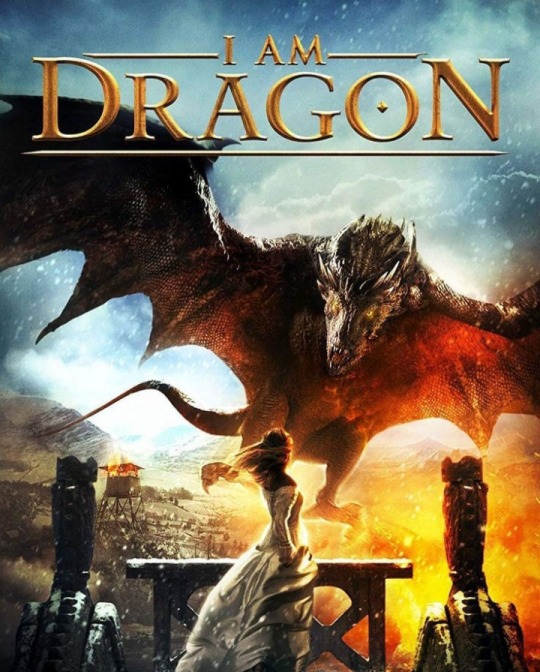
Damsel 🤝 I am Dragon
The sacrificed bride saving the dragon with compassion and becoming one with it, therefore saving them both.🔥🐉
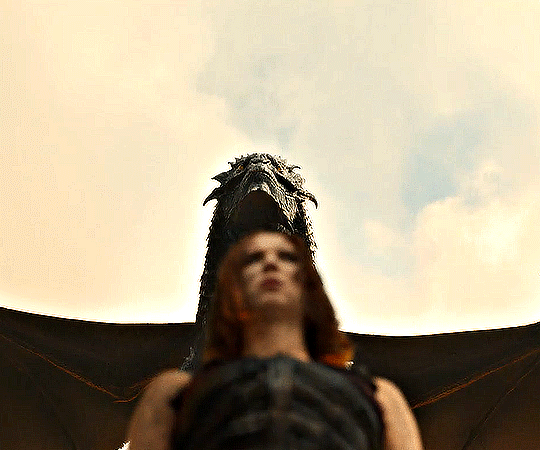


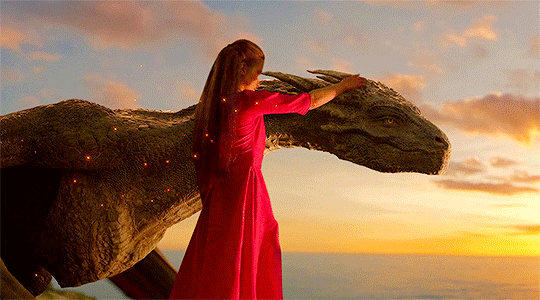
#damsel netflix#Netflix#he is dragon movie#millie bobby brown#princess elodie#damsel#i am dragon#he is dragon#dragon inside me#dragons
773 notes
·
View notes
Text
wish more people knew of I Am Dragon (2015) because I’m mostly alone in thinking it’s one of the best love story movies about a princess and a dragon




#genuinely one of my favorite movies#it’s a russian movie so I recommend watching with subtitles#it has a bunch of titles but I’m not gonna tag them all lol#I am dragon#dragons#fairytales#dragon#movies#fantasy
164 notes
·
View notes
Text
[ 🐦⬛ ] in the source link, you’ll gain access to #104 gifs of matvey lykov in “on- drakon” (2015). he was born in russia, and is white, so please cast appropriately when using my resources. all of these gifs were made from scratch, made for roleplaying purposes. please don’t redistribute or claim as your own. please like & reblog if you wish to use them.



205 notes
·
View notes
Text
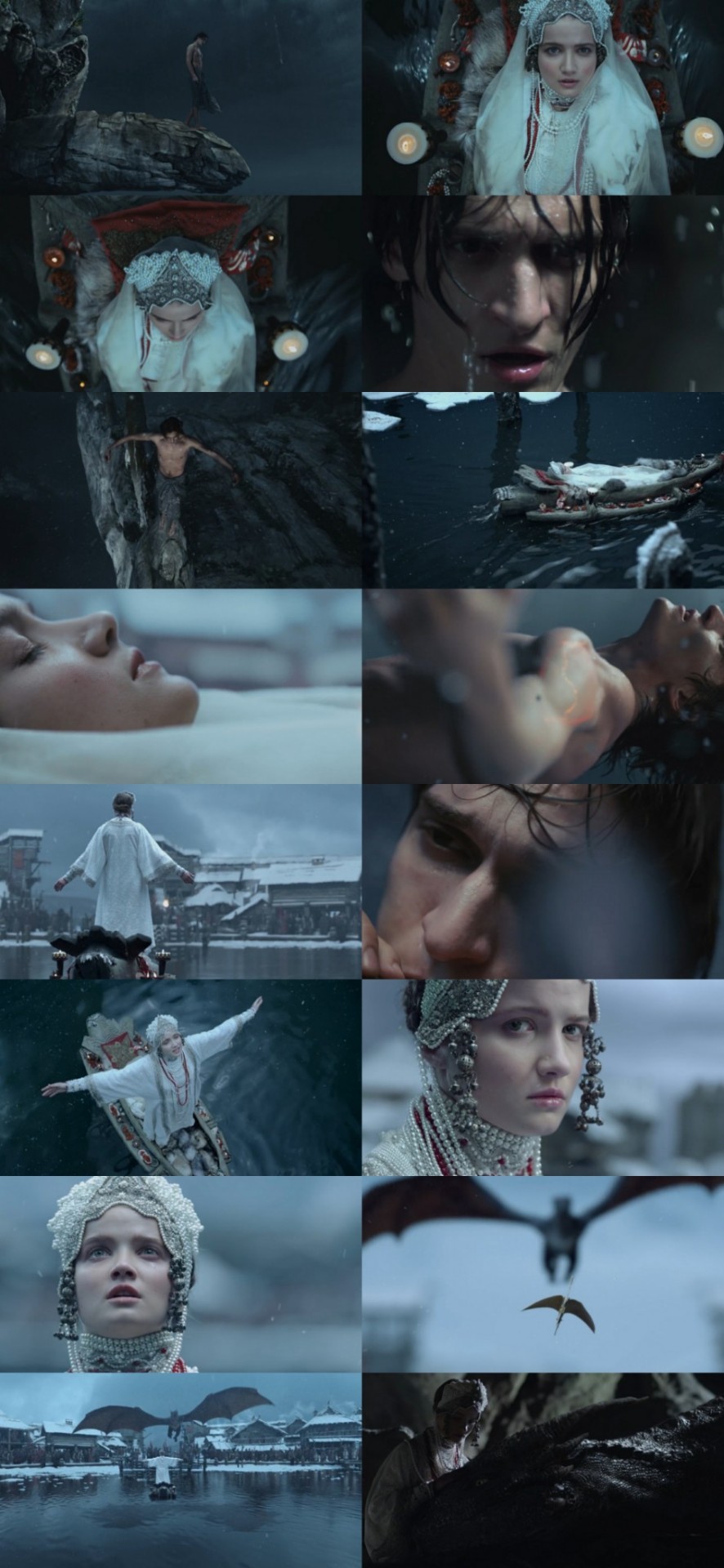
153 notes
·
View notes
Text

The fic CINDERS by Incubus_Daz decided to worm its way into my brain canal!!
I never even considered this ship before but I was scrolling through the Iida tag on ao3 and got here somehow!!! Love Iida and I’m a multishipper so……. :)
Feel like I’ve just dropped another ring in rarepair hell
Please show the author some love cuz I’m investeddd
#i am dragon#mha au#iidakiri#kiriiida#mha#mha fanart#my hero academia#tenya iida#eijiro kirishima#mha tenya#tenya iida fanart#kirishima eijirou#mha kirishima#bnha eijiro kirishima#my hero academia au#bnha kirishima#bnha tenya
19 notes
·
View notes
Text

Good night for a rewatch of I Am Dragon
21 notes
·
View notes
Text
Recent visually beautiful and generally watchable Russian fantasy movies
(because I start forgetting they exist at all) Ironically, all of them are adaptations of books/comics.

I Am Dragon / Он — дракон (2015) This movie is a very free adaptation of the novel "The Rite" / "Ритуал" by Maryna and Serhiy Dyachenko (Марина и Сергей Дяченко). It's a reinterpreting of an ancient tale about a maiden, a hero and a dragon. I don`t like the novel because it's very postmodern, wracks the typical fairytale plot and hurts my escapist feelings by ugly reality, but the movie is pretty fairytale-ish and nice. Firstly, it is visually beautiful and represent Slavic pseudo-medieval lore the way it should have always been in Slavic fantasy.



Secondly, as a love story between a monster and a maiden, it has got A PLENTY of tropes I'm usually looking for in Chinese dramas, so I understand very well why it was pretty popular in Asia.
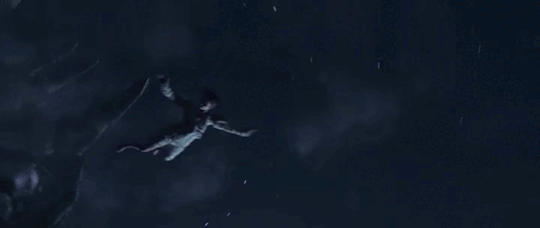

Thirdly, when I said it's visually beautiful I wasn't joking. The main hero is played not by an actor, but by a male model, who is shirtless all the time (and sometimes pantless) and has a very fit and good-looking body. It's something unbelievable that someone in Russia made a movie to please women's eyes! Really, it's insane!




The folk-rock band Мельница wrote an insanely beautiful song "Обряд" (The Rite) for this movie (more matched to the book plot, though), but it was never used as OST, which is a shame. The song is about a black sheep girl, who is denied by society and asks a dragon to come for her and to take her away, because the dragon is denied by this world just like her. You can listen to it here. The band also has a song "Змей" (The Wyrm) (based on Lev Gumilev's poem), which is more accurate to the plot of the movie: the wyrm kidnaps maidens to make them its wives, but they are all dying during the flight; at the end of the song a hero-knight is ready to shoot it in order to stop it. Listen to it here.
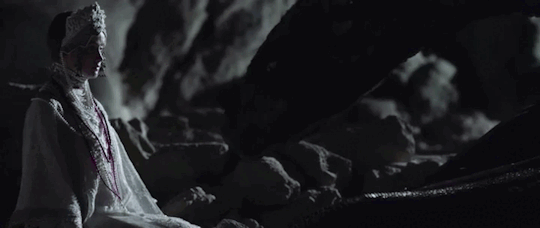
It ends with HE, which is better than the book's obscure ending, so it is pleasure for me to rewatch it till these days.
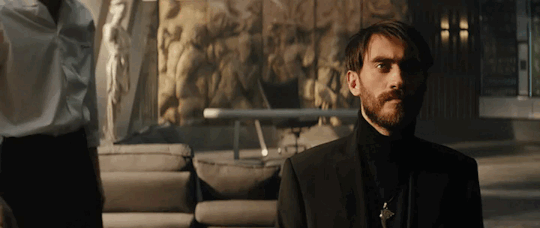
Major Grom: Plague Doctor / Майор Гром: Чумной Доктор (2021)
It is an adaptation of Russian comic series "Major Grom" by Bubble comics. I am traditionally not very happy with the source material, but it is very good reworked to be the screen play of this movie.
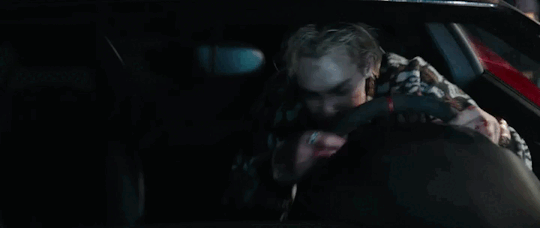
It's very beautifully made in terms of director's, cameraman's and screenwriter's work, which is a rare thing for Russian movies. Also, the actors are young and handsome, especially the villain, which is a rare thing not only for Russian movies, but for the current Western movies, too. It has got a lot of allusions to Russian reality and a lot of beautiful views of Saint Petersburg, the second capital of Russia and one of the most beautiful Russian cities. And it has got some unusual visual solutions that turn it into a comic it should be.
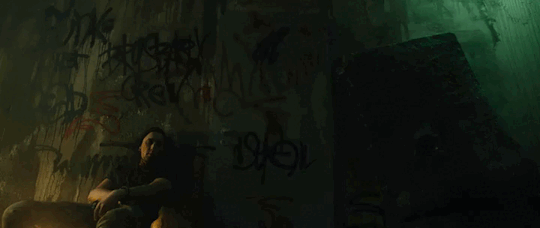

The plot revolves around a mysterious serial killer (kinda bad Batman), a black sheep police officer and Russian Mark Zuckerberg (kind of). Mark Zuckerberg is the best guy of this movie and I like him a lot! Серёёёёжа! 🧡🧡🧡
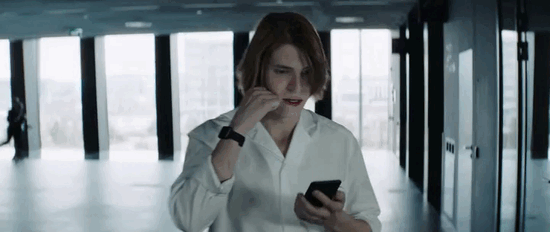
This movie wasn't popular in Russia because of political situation in the country by the moment of its release (the both sides found out in there something insulting for them and banned it), but even if it has something like that, I honestly didn't pay attention to it. It's just a nice blockbuster with a tragic and handsome villain. The villain also has got his own BL-drama (in the comics they are really lovers, it`s as obvious as it could be shown in a Russian comic).
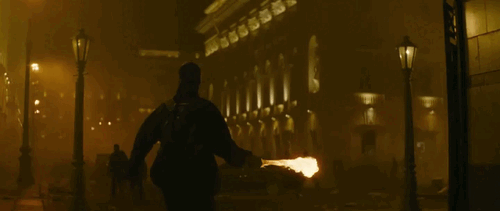
By the way, the villain is hot, insane, ruthless, sensitive and suffering. How does he contain all of this character treats in one personality? you may ask. He doesn`t. He has dissociative identity disorder, I would answer.


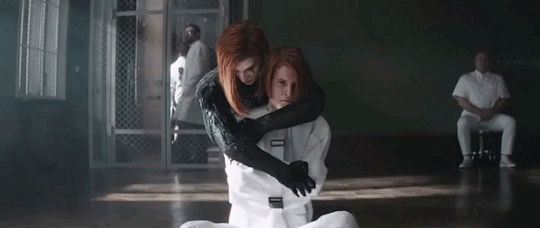
I don`t know if it works by now, but some time ago you could watch this lovely movie on Netflix.
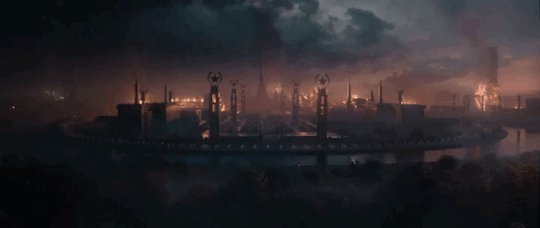
The Master and Margarita / Мастер и Маргарита (2024) This is a loose adaptation of Russian classical novel "The Master and Margarita" by Mikhail Bulgakov. I genuinely hate this book, but the adaptation reinterprets it, divides it into very interesting layers and makes it understandable and beautiful.


It`s layered, so it will probably be hard to understand what layer are we currently on if you are not familiar with the original story. The first layer is an ugly Soviet reality, the second layer is a plot of the novel that the main hero is writing, a story within a story. The third layer is the insane intertwining of the first two layers. On the reality layer the Master loses his job and freedom because of friend's denunciation and becomes star-crossed lovers with a married woman. On the novel level he meets devil, who visits Moscow by chance, and the devil gives him and his woman opportunity to live their lives being free from everything that usually tortures people IRL. Somewhere among those layers is a little plot about Jesus and Pontius Pilate.
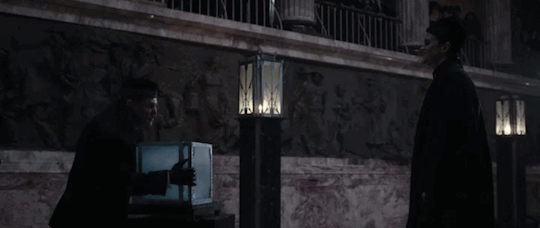

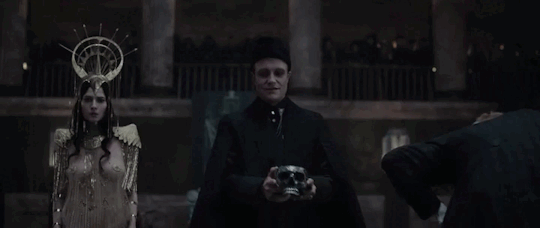

The movie is visually beautiful. Although it feels pretty anti-Soviet, Soviet visuals of the movie are gorgeous. There were used the Stalin-times concepts of Moscow of the Future, the CGI buildings in frame came from the real architecture projects of those times. The Stalin Empire architecture style and views are typical for Moscow (but as I know, ironically, this all was shot in Saint Petersburg). It seems to me that this movie is heavily stuffed with visual allusions to the Western works: devil's escort looks like bunch of Pennywises, Margarita is Enchantress from Suicide Squad I, the scene of blood dripping is from Blade I etc. Usually, when I see it in Russian movies, it feels like plagiarism because I can recognize the reference but there is nothing except for these references . But here we have got the plot, so the allusions work as allusions and don`t irritate me.

The movie is dark, disturbing, uncomfortable. It really makes you feel as if you watch devil and his escort marching around you; they ravage, kill and destroy everything and you can only breathlessly, helplessly and in fear watch them. The German actor playing devil is insanely good. He stole the movie and I understand why it should have been named Woland (the devil's name) instead of the current movie's name. You may want to watch it, because it's very unusual in terms of plot and visuals experience, especially when you are not familiar with the book.
#movies#films#movie recommendation#fantasy movies#blockbuster#movie review#favorite movies#heroes and villains#comics#book adaptations#novels#SDaboutFilms#fairy tales#The Master and Margarita#woland#margarita#Major Grom: Plague Doctor#майор гром#сергей разумовский#sergey razumovsky#major grom#i am dragon#он дракон#риутал#мастер и маргарита#master and margarita#воланд
138 notes
·
View notes
Text
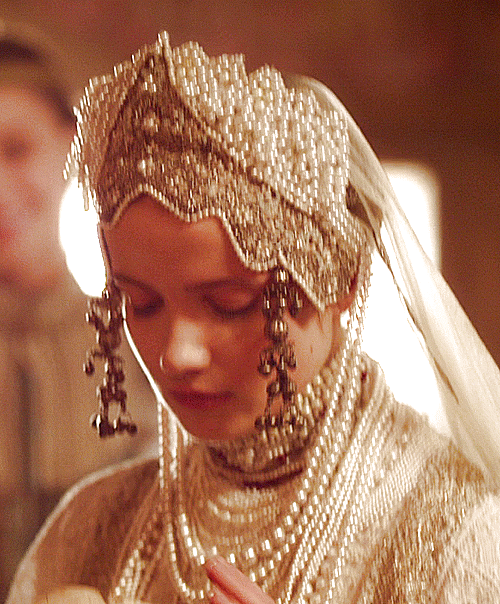
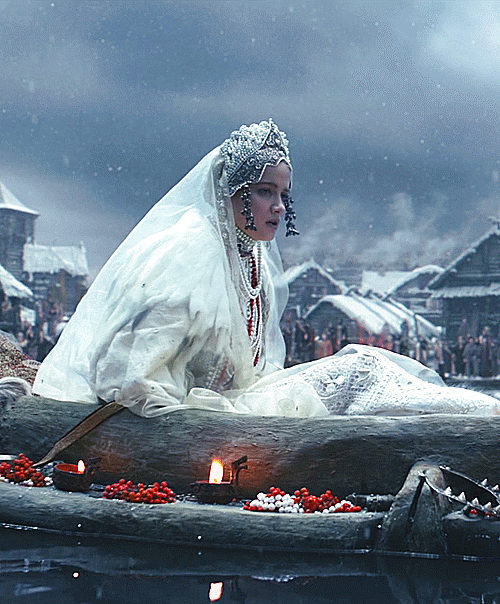
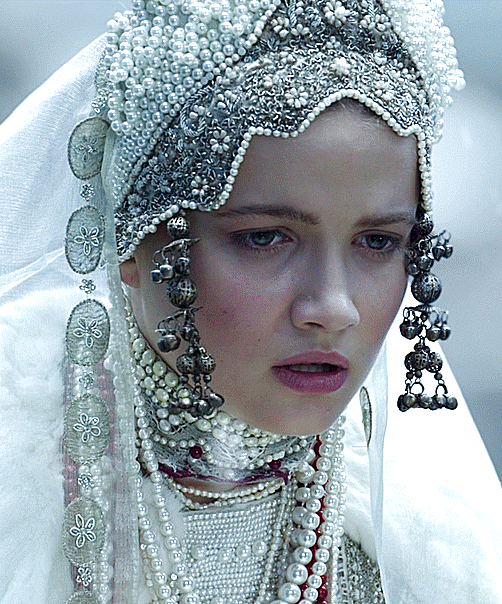
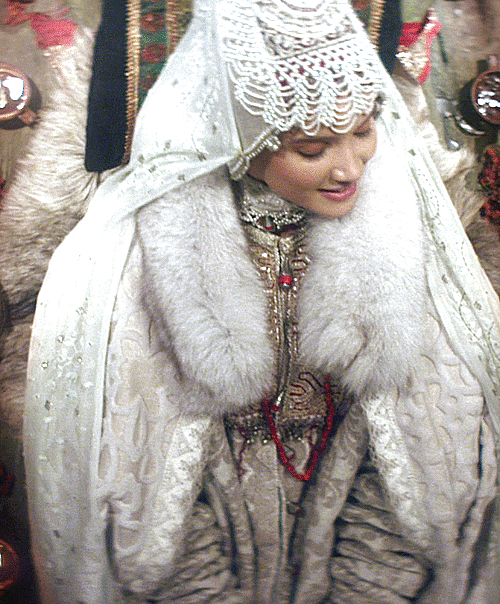
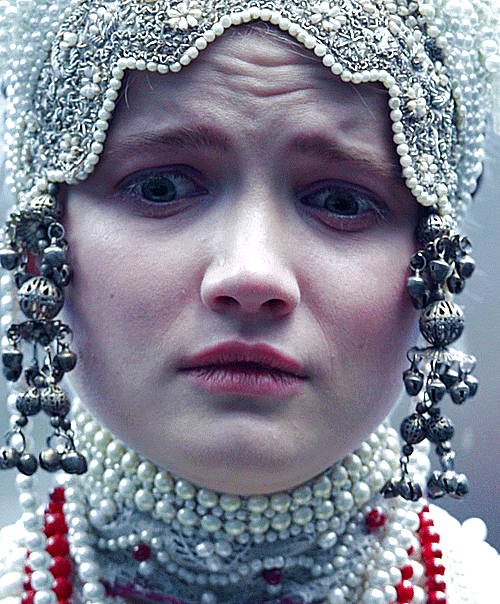
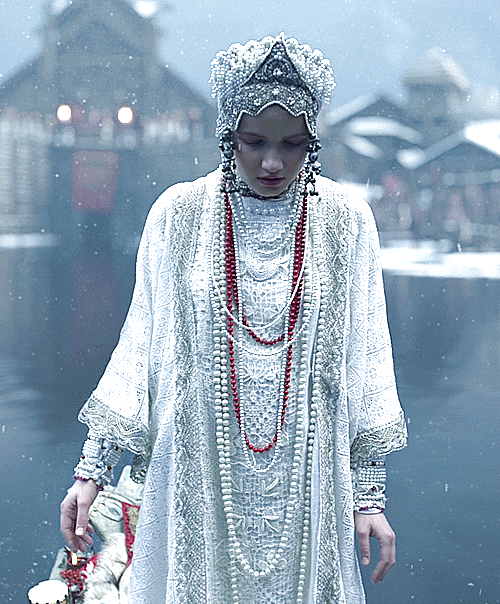
Miroslavas wedding dress & kokoshnik in I am Dragon
#i am dragon#miroslava#kokoshnik#perioddramaedit#period drama#costume design#russian#periodcostume#wedding dress
2K notes
·
View notes
Text





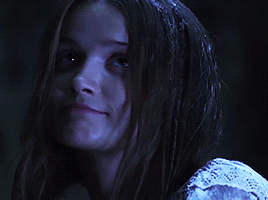
“Silly me, I even chose a name for you.”
#on drakon#i am dragon#he's a dragon#он дракон#he is a dragon#he is dragon#mira x arman#arman x mira#arman#mira#my gifs#she gave him a new name#then a new birthday#and then a new life with her and their little daughter#they're the sweetest#this is where my username comes from btw
208 notes
·
View notes
Text
A Girl and Her Dragon
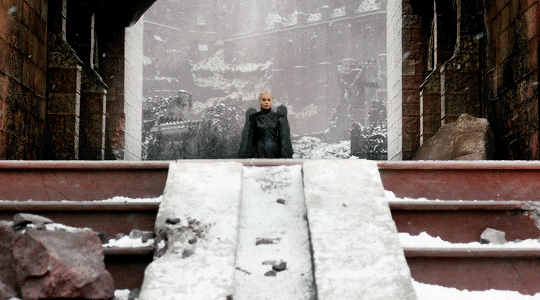
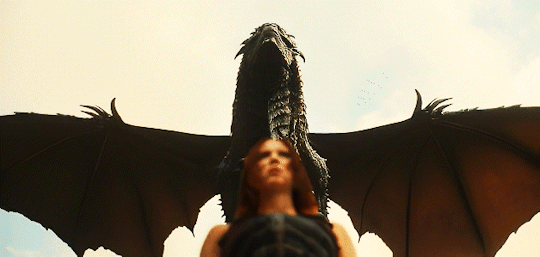
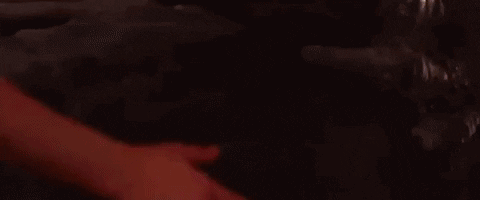
#dragons dragons dragons#obsessed with dragons#daenerys targaryen#princess elodie#miroslava#got#game of thrones#damsel#i am dragon#dragon#dragon woman#hear me roar
54 notes
·
View notes
Text

— I AM DRAGON.
Part One, 499 Screencaps.
Part Two, 499 Screencaps.
Like or reblog if it was useful, every interaction shows us that we should keep making screencaps for y'all ♡
#screencaps#movies#i am dragon#maria poezzhaeva#matvey lykov#pyotr romanov#miroslava#arman#russian movies#screencaps of movies#movies screencaps#coral
41 notes
·
View notes
Text
fave genre is dragon boys that fell in love with a human girl who showed a more human side to them, proving they aren’t the monster everyone thought they were




#if you love dragon sylus I highly recommend watching I Am Dragon (2015)#it’s sorta like if dragon sylus & mc had a happy ending#sylus#love and deepspace#lads sylus#lnds sylus#sylus x mc#i am dragon#arman x mira#I am dragon 2015#he’s a dragon#dragons
56 notes
·
View notes
Text
Elain/Elucien vibes:





9 notes
·
View notes